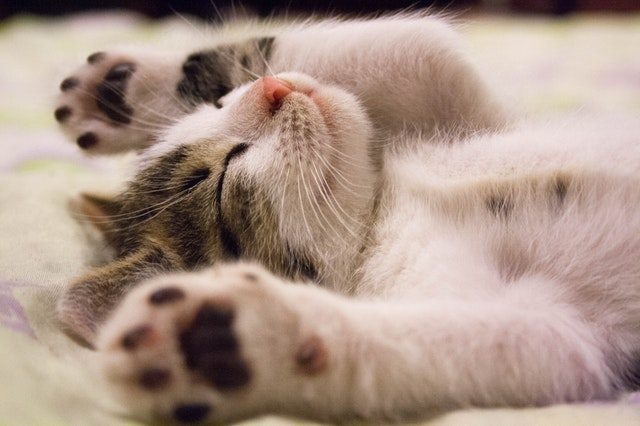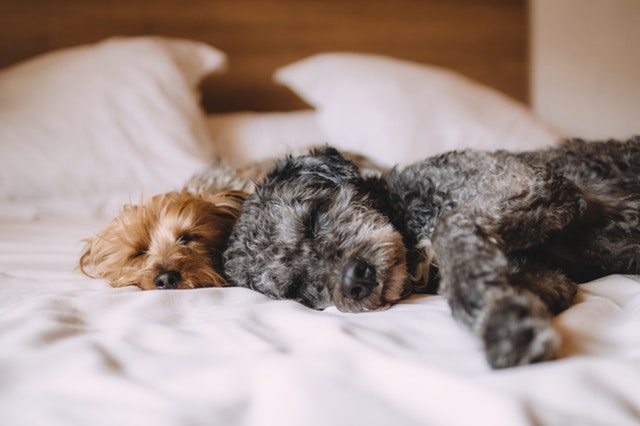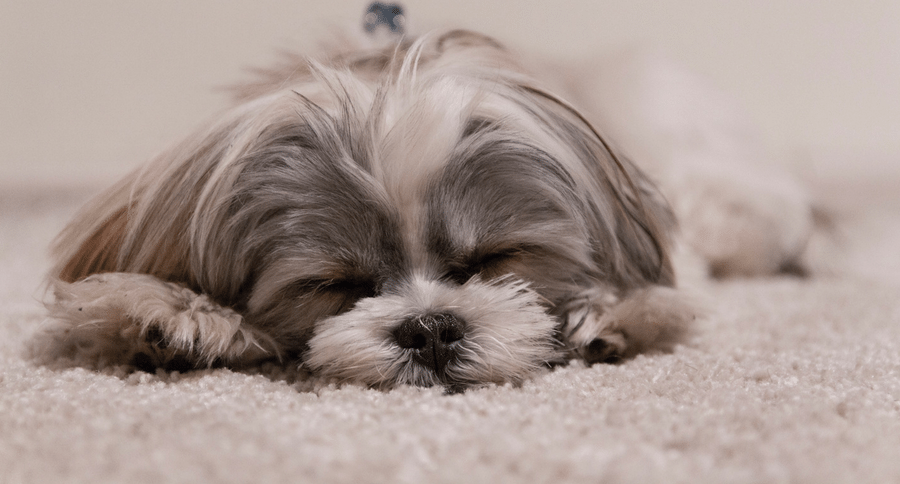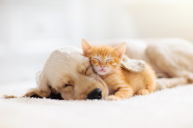Dogs and cats really do dream, but it's different than humans.
The average adult dog spends 12 to 14 hours sleeping while the average adult feline sleeps 12 to 16 hours a day. Sleeping habits are affected by a number of traits including breed, age, size, health, and of course, physical activity during their daily routine.
Dogs and cats fall into the category of predatory animals. Unlike prey animals, who have to spend even their sleeping moments ready for fight or flight, predators have the lucky fate to be able to snooze as much as they please without regard to their safety.
In general, bigger animals tend to get more shut-eye than smaller animals, meaning a large breed like a Great Dane or Great Pyrenees is likely to clock more hours on the bed than a small dog, like a Chihuahua. Older dogs and older cats obviously sleep more than playful puppies or kittens because health and energy level deteriorate significantly with age. Newborn animals sleep closer to 20 hours a day.

All mammals enter into the REM (rapid eye movement) cycle, the dream stage of sleep. That means dogs and cats probably are dreaming about chasing squirrels and birds. Much like humans, you'll notice dogs and cats tend to spasm their legs and twitch their eyelids REM sleep.
This dreaming stage is considering the wakeful sleep, and too much REM can actually cause animals to be more tired. In addition to light sleep, mammals also enter into a stage called deep sleep. This is the coveted form of restful sleep into which dogs especially are capable of quickly entering and exiting.
Compared to humans, canines and felines also sleep in multiple phases. Napping aside, humans get their daily required sleep all at once in one long nighttime snooze. Dogs and cats, on the other hand, sleep in spurts. Each time dogs fall asleep, they quickly enter into the deep sleep stage from which they can wake from instantly. In deep sleep, breathing and heart rate as well as blood pressure slow. Cats, on the other hand have different sleeping patterns, and spend more time in light sleep.

Because they wake up so easily, dogs and cats need more sleep than humans so that they have more opportunity to complete the full sleep cycle, including finishing a round of REM.
Dogs and feline friends also have an alert resting phase where they're just lounging around but not actually entering into a calculated 12-plus hour daily sleep cycle. Pets are also able to adapt their sleep cycle to mirror that of their humans and their feeding schedules. They are flexible sleepers.
If your pet seems to be sleeping more or less than normal, be sure to schedule a check-up with your veterinarian to ensure overall health. Underlying health problems, like anxiety, arthritis, and thyroid disorders like hyperthyroidism can cause disruptions to a typical sleep cycle.
How many hours a day does your pet sleep? Tell us in the comments below!
WATCH NOW: 12-Foot Bed Can Fit All the Pets





